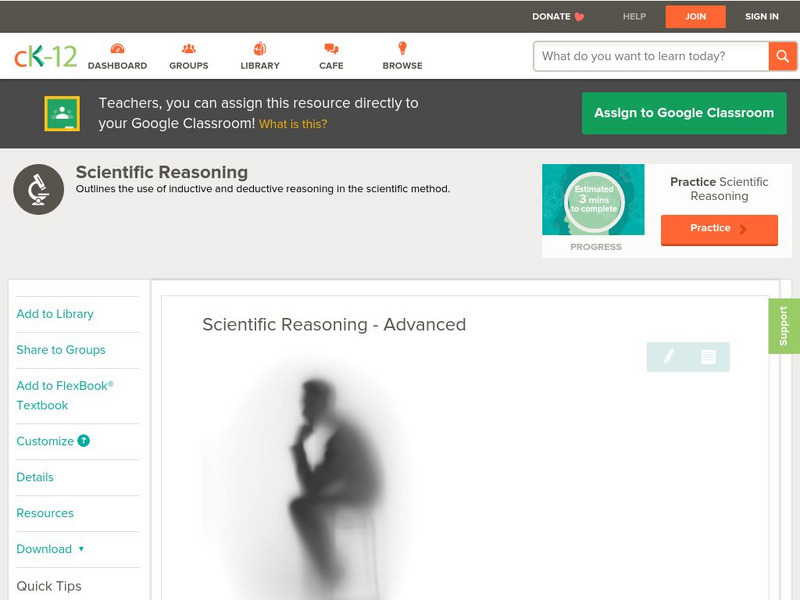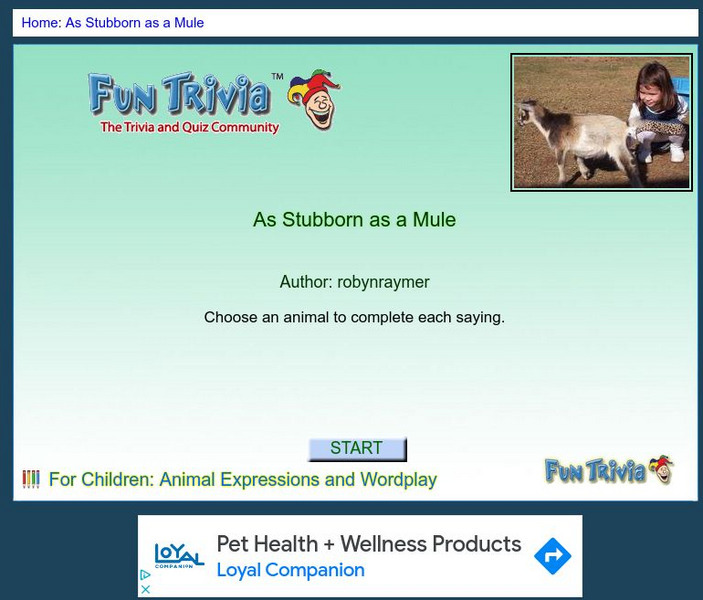Hi, what do you want to do?
Curated OER
Propulsion Pop!
Students demonstrate an understanding of the text by completing a propulsion activity, charting the results, and answering questions that demonstrate an understanding of rocket propulsion.
Curated OER
Geometry in Tessellations
Students examine tessellations and their geometric properties. Students also develop a better understanding of lines, planes, angles, and polygons.
Curated OER
Diamonds of Delaware and Maryland's Eastern Shore: Seven Black Men of Distinction
Young scholars examine writings from Booker T. Washington. They write short essays based on topics given to them and complete a matching activity. They also discuss aspects of Washington's life.
Curated OER
Venn Diagrams With the Pain And the Great One
Students read the story, The Pain and the Great One, written by Judy Blume, and discuss the characters and the sequence of events. They compare/contrast the two main characters using Venn diagrams.
Curated OER
Who is in Charge in Ottawa ?
Students explore how to become a responsible voter and study Canada's parliamentary system.
Curated OER
Coordinate Proofs
Students explore the concept of coordinate proofs. For this coordinate proofs lesson, students write coordinate proofs using properties of distance, slope, and midpoint. Students discuss why it is sometimes beneficial to double the...
Curated OER
Weather Symbols
Learners study weather symbols. In this weather symbols lesson, students review the symbols for cold, warm, and stationary fronts. Learners use a weather map to study the weather symbols, complete a weather illustration and prediction...
Curated OER
Morphemic Analysis
Students analyze content area vocabulary. In this content area literacy lesson, students list math words they are unfamiliar with and identify morphemes found in those words that are found in other words. Once they have a list of words...
Pennsylvania Department of Education
Creating Polygons
Students describe, make and compare polygons. In this creating polygons lesson, students identify properties of quadrilaterals and describe common features of two dimensional shapes.
Web Center for Social Research Methods
Research Methods Knowledge Base: Deduction and Induction
This site provides a good explanation of deductive and inductive thinking.
Texas Education Agency
Texas Gateway: Distinguishing Between Inductive and Deductive Reasoning
This lesson focuses on distinguishing between inductive and deductive reasoning. Sometimes it's difficult to separate these two types of reasoning because we often use them together; drawing conclusions in inductive reasoning is likely...
Texas A&M University
Wtamu Virtual Math Lab: Beginning Algebra: Reasoning Skills
A tutorial on reasoning skills focusing on both inductive and deductive reasoning. Has several examples and exercises with answers and discussion.
CK-12 Foundation
Ck 12: Scientific Thinking: Scientific Reasoning Advanced
[Free Registration/Login may be required to access all resource tools.] Find out about how people use scientific reasoning to think scientifically. Included in the assignment is a four minute video and review questions.
ReadWriteThink
Read Write Think: A Close Reading of Seamus Heaney's "Blackberry Picking"
Contains plans for two lessons that explain an inductive method for analyzing poetry. Seamus Heaney's "Blackberry Picking" is analyzed using this model as an example, although the method can be used on a variety of poems. In addition to...
Lumen Learning
Lumen: Boundless Biology: The Science of Biology
Explore the concept of scientific reasoning, and compare and contrast hypothesis and theories while understanding the difference between deductive and inductive thinking.
Other
Project Euler
A collection of challenging mathematical and computer programming problems that will require more than just mathematical insights to solve. The use of math skills will help students arrive at efficient methods, while the use of...
University of Utah
University of Utah: History of Psychology: More on Logic
Brief overview of the definitions of 'inductive' versus 'deductive' reasoning.
Biology 4 kids
Biology4 Kids: Logical Reasoning
Learn how logic and reasoning play a part in everyday thinking, and how deductive and inductive reasoning leads investigators to conclusions.
Other
Fagler College/nas 111/scientific Methodology
Power Point presentation on scientific method for NAS 102 Human and Environmental Biology II.
Rock and Roll Hall of Fame
Rock & Roll Hall of Fame: Bob Dylan
One of the premier songwriters of his time, one cannot think of folk music without thinking of Bob Dylan. This legendary singer was inducted into the Hall of Fame in 1988 and has five songs on the top 500 list of most influential songs.
Quia
Quia: Analogy Battleship
This game will increase the player's understanding of different types of analogies. It has three difficulty levels.
Lumen Learning
Lumen: Critical Reading: Logic and Structure
This lesson focuses on structure and logic including types and purposes of essays, organizational patterns, argumentative writing, and logic and fallacies.
Science Struck
Science Struck: Examples of Deductive Reasoning
Learn what deductive reasoning is and look at examples of how to apply it.
Fun Trivia
Fun Trivia: As Stubborn as a Mule
This 10-question game requires students to select an animal to complete a saying. Students are directed to double click their answer which brings up the correct answer and an explanation of the saying.
Other popular searches
- Inductive Thinking Model
- Inductive Thinking Lessons
- Inductive Thinking Grammar
- Inductive Thinking Reading
- Algebra Inductive Thinking
- Inductive Thinking Healt
- Inductive Thinking He Alt
- Inductive Thinking + Grammar

























